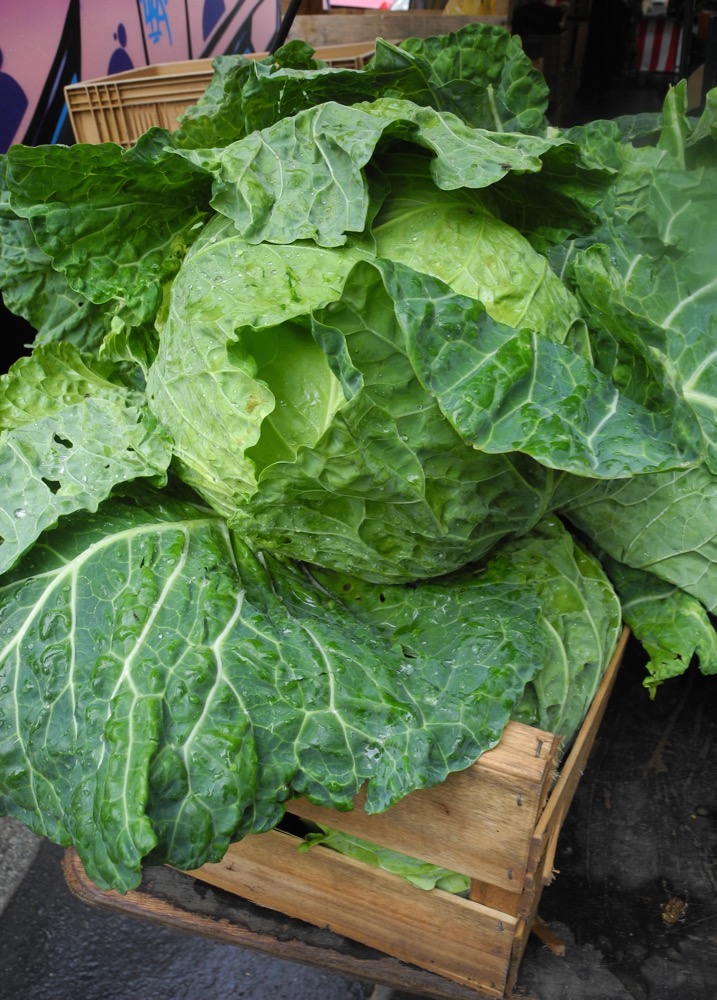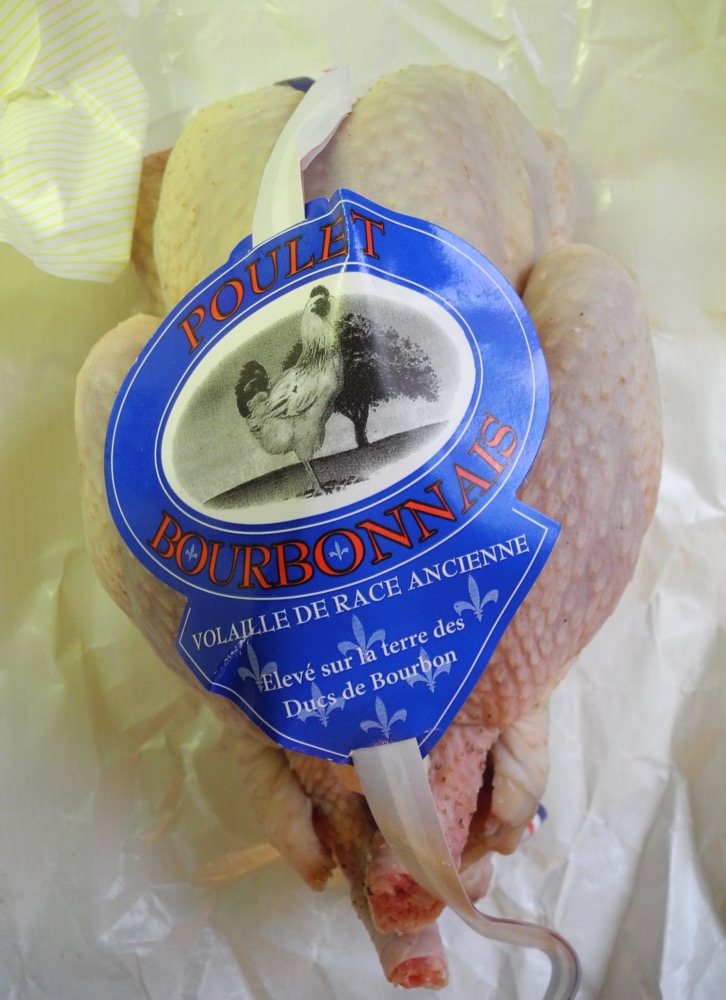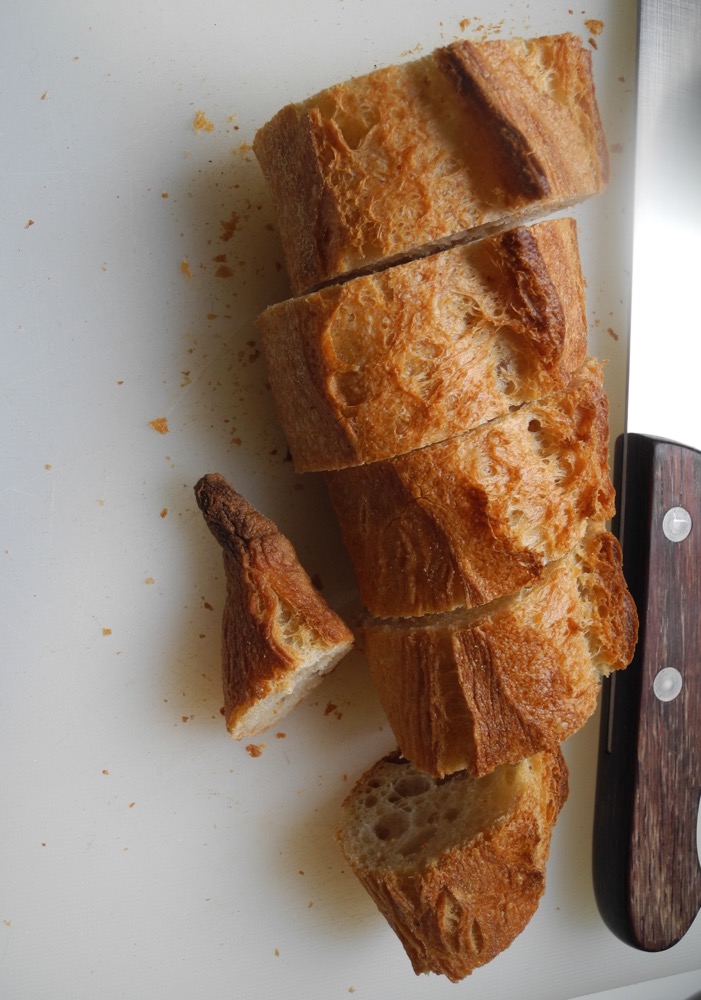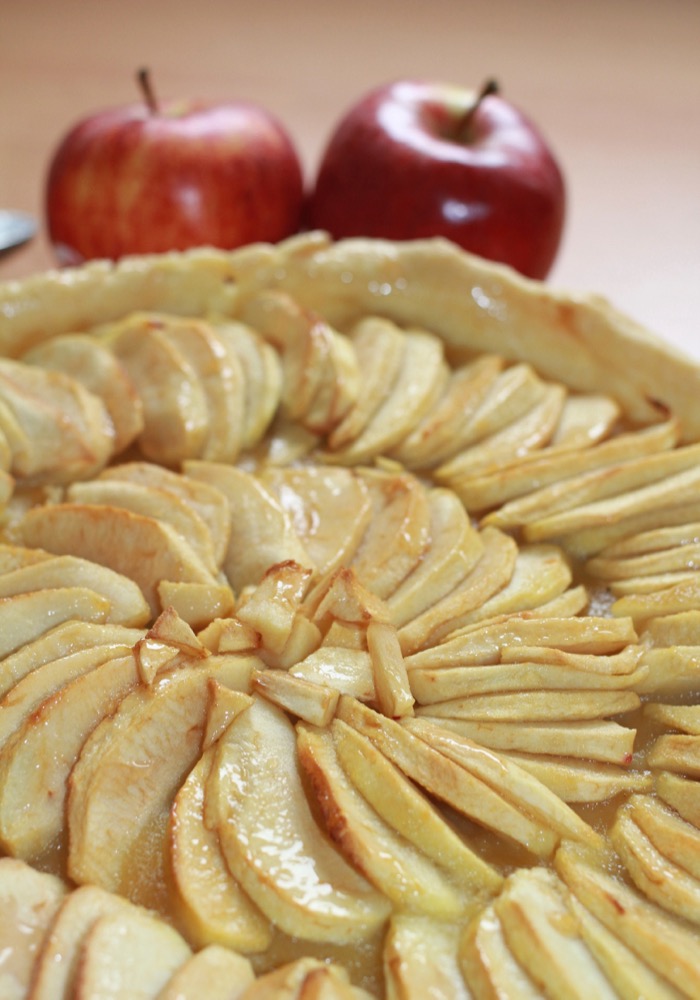Terroir
It's fitting that the expression, "armies march on their stomachs" is attributed to a Frenchman. Taking inspiration from Napoleon, I'd say the same about tourists, especially if you're visiting France.
Despite the culinary greatness that can be found in Paris, when we visit there, we prefer to eat in neighborhood bistros and brasseries, the kind of places that have the day's specials written on sidewalk chalkboards and even without the specials, can always be counted on for gorgeous salads draped with large slices of Bayonne ham and old fashioned main dishes like blanquette de veau or boeuf avec carottes.
But for those of us who want to work with remarkable ingredients, cooking in Paris is a thrill. On some of our past visits if we were staying for more than a few days, we would rent an apartment. We'd choose a place as much for its location near the Boulevard Raspail's tri-weekly outdoor farmers' markets as for its kitchen. We also try to be within walking distance of La Grande Epicerie, the huge and tempting grocery market at Le Bon Marché, to Poilâne (famed for its sourdough bread and rustic apple tarts), and neighborhood fishmongers, produce shops, butchers with their windows as full of awards and citations as chickens, cheese shops, and of course, chocolate makers and patisseries.
Its tempting to do a comparison of food shopping in Paris versus New York. Yes, the Parisian home cook can buy what are probably the best chickens anywhere, but what is absent in the French supermarkets is diversity. I'm not talking about being able to buy American peanut butter or English teabags and a dozen kinds of mustard, because this you can easily do in France. What I mean is that our markets in NYC reflect the diversity of our city and this is uniquely urban American.
As in other major U.S. cities, our New York markets are filled with the flavors of our home cooks. We can buy French chevres and cornichons and paté that are almost as good as those in Paris. But just as easily we can have smoked tuna, fresh or cured chorizo, lemongrass, fish sauce, fresh gnocchi, hundreds of hot sauces, Greek oregano, or capers (tiny, large, or caperberries) packed in salt or brine. And it needn't take a subway ride to another borough or shopping at a half-dozen different markets to get them. In addition to tourists, maybe I should add to Napoleon's observation that not only do armies travel on their stomachs but so do communities of cooks and we've got 'em.
Terroir
Besides access to ingredients, I had another thought about France's very serious food culture and that has to do with terroir. It's a French word and concept, with origins from the French and Latin words for land, that is most commonly used with wine, to mean the taste and flavor that comes from the environment in which the wine was produced. Things like soil, sun, geological history, and climate form the basis of terroir, and thus the French wine AOC system (appellation d'origine contrôlée). Simply put, it's why the same grape grown in one vineyard will taste completely different when grown in another.
But terroir is not limited to wine. It is also why cheese and olive oil and lettuce and bread taste the way they do depending upon where they come from and when they were grown and produced. For example, with cheese -- the grass that cows eat will vary by time of year, the amount of rainfall, and whether the fields are on the north or south side of a slope and taken together, these will change the flavor, fat levels, and even color of their milk. And thus the cheese made from the milk. Or consider olive oil. It's why oil from Sicily is often more golden and mellow than the vivid green and peppery oil of northern Italy. It's how un-engineered wheat, with no GMOs, produces those baguettes you still remember from your first visit to France.
Lou DiPalo of DiPalo's Fine Foods in Manhattan's Little Italy, is particularly expert in how Parmigiano-Reggiano varies by each of the four seasons, like vintages of fine wine. A couple of years ago we did a podcast with Lou and what he knows about the seasons of Parmesan is always interesting to hear. See our link.
America's food culture has been a bit late to the realization that where our food is grown makes a difference, which is exactly the point of terroir, something the French have always known. We've invented our own names for terroir, such as being a locavore or eat what your grandparents ate or buy local or reduce our food's carbon footprint or eat food grown within an hour of where you live (a tough test at rush hour). Just getting dinner on the table and doing so in a healthy and flavorful way is already a challenge; adding all this other criteria, no matter how meaningful, can be another hurdle. But the more we are self-conscious of where our food comes from, whether by carefully reading labels, or understanding what GMOs are, or parsing definitions like organic versus natural, or canning and freezing summer produce to enjoy mid-winter -- the closer we get to the principles of terroir.
After buying ingredients in Paris and being stunned by the big taste of a simple zucchini and tomato gratin that I made from ingredients I bought at the Blvd. Raspail market, I can't help but think that flavor will be our best motivation to always seek the best we can find and afford.
A favorite and easy-to-make French salad includes a round of goat cheese placed on a piece of bread and baked until the bread is toasted and the cheese is soft but not melted. It's on the menu of every café and brasserie and is easy to make in our own city kitchens. You can make this either with an imported fresh chevre or a domestic one (although I avoid those from Coach which I find are always too sour).
Salad With Warm Goat Cheese
Serves 4.
8 to 10 oz. log of goat cheese (Montrachet is a good and easy-to-find type) or 3 or 4 small individual cheeses called crottins (usually available at cheese shops or better cheese departments); keep the cheese chilled until ready to use so that it's easier to slice
8 small slices of rustic bread, like ciabatta or pugliese or levain
5 tablespoons extra virgin olive oil, plus extra for brushing the bread
2 tablespoons red wine vinegar
1 teaspoon Dijon mustard
Salt
Freshly ground black pepper
Mixed salad greens for 4 servings, about 8 cups
Preheat the oven to 400° F.
Slice 8 half-inch slices of goat cheese from the log, or if you're using the individual crottins, slice them horizontally, also into half-inch slices. Goat cheese can easily crumble when slicing it with a knife so try using a length of dental floss to cut the slices.
Place the bread on a baking sheet and brush each slice lightly with olive oil. Place a slice of goat cheese on each slice and bake for 8 to 10 minutes, until the bread is toasted and the cheese is warm and softened, but not melted.
Make the vinaigrette by combining the vinegar with the mustard, 1/2 teaspoon salt, and several grinds of black pepper. Stir with a fork or small whisk until the salt dissolves and the mustard is combined. Add the olive oil and whisk until combined. You can make the vinaigrette in advance and whisk it again just before dressing the salad.
Place the greens in a large salad bowl. Drizzle enough vinaigrette to just lightly coat and toss. Divide the salad among four plates and place two slices of the toasted bread and cheese on each plate. Sprinkle each piece of cheese with a little ground pepper.
Serve immediately while the cheese is still warm and soft.
Terroir In New York and Apple Season
So let's bring this closer to home and to our own terroir. It's now autumn and it's apple time. During this glorious fall, even if going apple picking is outside your convenience zone, a visit to almost any Greenmarket will offer up a bounty of apples. They are gorgeous and fragrant, satisfying to eat by hand, biting through that snap of skin to the sweetness beneath. But cooking and baking with apples is one of autumn's rewards, especially for those of us who live in a cooler climate where we can buy apples before they've been sitting in some warehouse for six months.
One of my favorite apple recipes is for what I call Applesauce for Grownups. It's a classic applesauce to which some complexity is added with Calvados and sweetness from apricot preserves. I learned the recipe from Julia Child's first book and it can be a dessert or served alongside a pork roast or stirred into yogurt. See our link.
I also love to make apple pies and tarts. Apples are very sturdy to bake and this apple tart is essentially foolproof with no compromise on flavor.
I've included my very reliable method for making a single-crust pie dough that's started in a food processor and finished by hand. But even if you don't think of yourself as a baker, you could buy a pre-made or frozen crust (raw, not already baked), follow the instructions for adding slices of your favorite apples and a sprinkling of cinnamon sugar and you will be swooning from the fragrance as it bakes.
Simple Apple Tart
For the Crust --
1 1/4 cup all-purpose flour
1 tablespoon sugar
Pinch of salt
4 tablespoons (1/2 stick) unsalted butter, very cold, cut into 1/2-inch pieces
3 tablespoons cold all-vegetable shortening (Crisco's no-transfats is very good)
4 to 6 tablespoons ice-cold water
Extra flour for rolling out the dough
Making the Tart --
1 pound apples (about 3 large apples or more if smaller). Choose Granny Smiths, Crispin, Honey Crisp, Jonagold, or another crisp apple that will hold their shape; avoid ones like McIntosh that soften to mush when cooked
1/2 cup sugar
1 teaspoon ground cinnamon
1/2 cup apricot jelly or apricot jam
2 tablespoons Calvados, rum, or water
Begin by making the pastry dough. Place the flour, sugar, and salt in a food processor and pulse once to combine. Sprinkle the butter over the flour mixture. Pulse 4 or 5 times, one second for each pulse. Add the shortening and pulse until the mixture resembles coarse meal. Do not over-mix.
Transfer this mixture to a large mixing bowl and add 4 tablespoons ice water. Combine with a fork until large clumps form and the dough starts to hold together. If you need more moisture, sprinkle with additional ice water a teaspoon at a time so that you don't get it too wet. Adding the water by hand and not all at once in the food processor gives you vastly more control and thus, a better, flakier result.
Gather the dough into a ball, flatten it into a disc, wrap in plastic wrap, and refrigerate for about 30 minutes. You can store the dough in the refrigerator for up to a day.
Preheat the oven to 350° F.
Roll out the dough and line a 9-inch tart pan.
Peel and core the apples (a melon baller is a good tool to do this) and slice into 1/4-inch slices, and arrange the slices over the tart shell bottom in overlapping, concentric circles, having the circles also overlapping so that the entire surface of the tart is covered in a single layer. Combine the sugar and cinnamon and sprinkle over the entire surface. Bake for about 45 minutes until the crust is golden brown and the apples are tender.
While the tart bakes, combine the apricot jelly or jam with the Calvados, rum or water in a small saucepan and place over a low heat until the jam melts and combines with the liquid. If you prefer, you can strain this mixture to remove any bits of apricot but I sometimes like the bits of fruit add to the tart.
Remove the tart from the oven and while it's still hot, brush the apple slices with the apricot mixture. Let cool. If you've used a tart pan with a removable ring, carefully lift the tart out of the ring. Serve either warm or at room temperature, maybe with a small scoop of vanilla ice cream.
Coming home to my kitchen after being in another country always makes me appreciate being a home cook in New York City and grateful for our food merchants. Especially as we start heading into the holiday season, with all the opportunities we'll have to cook for our friends and family, we can celebrate the bounty and our own terroir that we have here at home.
Enjoy this beautiful autumn.
Kate McDonough
Editor, TheCityCook



